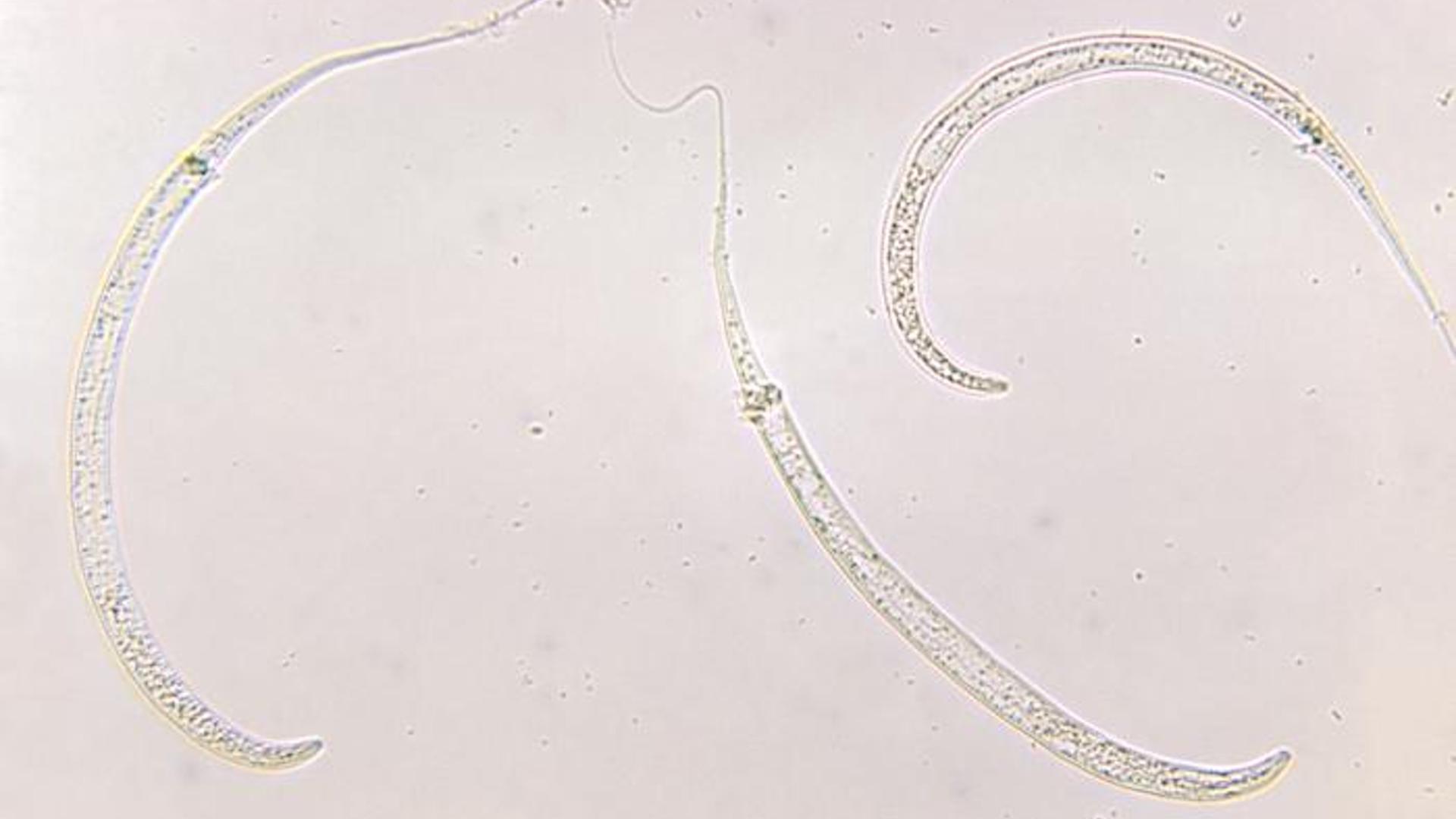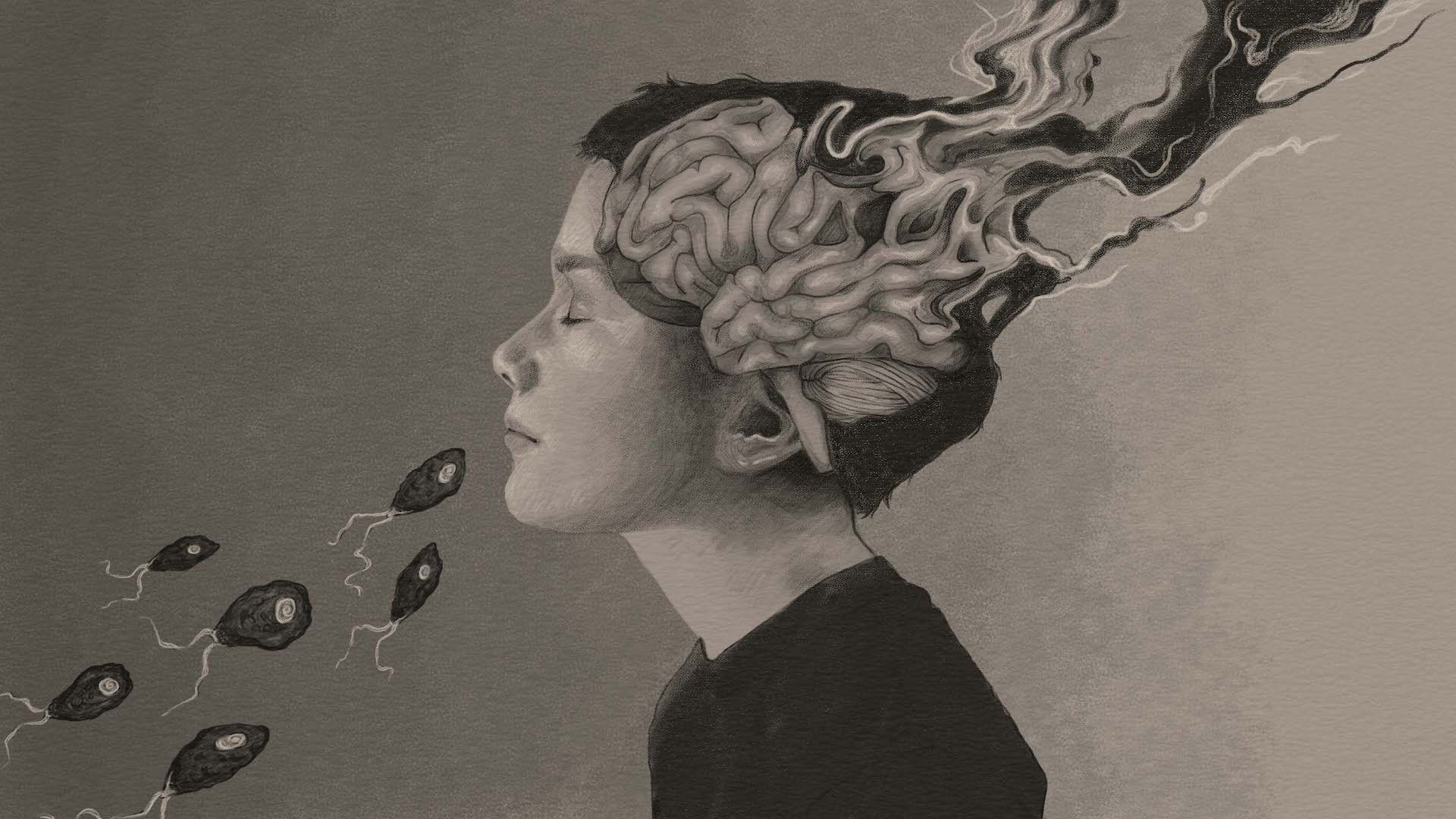
Water is life. But it can also be the vehicle for bacteria, parasites and other microorganisms that can make people very, very sick. Unfortunately, researchers expect waterborne illnesses to become more likely in a warming climate, according to the U.S. Global Change Research Program. Warming temperatures may expand the range of some parasites and bacteria, lengthen the blooming season for some toxic algae, and stress water infrastructure to the point of failure.
Read on for some of the nasty infections untreated water can carry — and how to avoid them.
Cholera

What it is: Cholera, caused by the bacterium Vibrio cholerae, causes diarrhea and vomiting, and can quickly lead to death from dehydration and shock, according to the Centers for Disease Control and Prevention.
Cholera was a major cause of death in London in the 1800s, driven by a rapidly industrializing population and a lack of sewage treatment. The leading theory at the time attributed the disease to foul "miasmas" — bad air that could cause contagion. But when physician John Snow reconstructed a map of cases in an 1854 outbreak, it showed a common denominator among the sick: water from the Broad Street Pump in Soho. His data convinced authorities to shut down the pump and earned Snow a place in history as the father of modern-day epidemiology.
Cholera still kills today, however. There are 1.3 million to 4 million cases each year, according to the World Health Organization (WHO), with 21,000 to 143,000 ending in death. The disease is treatable with oral rehydration solution, which is simply clean water, sugar and salt. Thus, these deaths are the result of not lack of treatment options, but of lack of access to treatment among the most vulnerable.
How to avoid it: Cholera deaths are preventable with proper sanitation and access to clean water.
Primary amoebic meningitis

What it is: A rare-but-terrifying infection, primary amoebic meningitis (PAM) is caused by the amoeba Naegleria fowleri, which lives in freshwater lakes, rivers, and hotsprings. The amoeba proliferates at water temperatures of at least 86 degrees Fahrenheit (30 degrees Celsius) and thrives at 95 to 113 F (35 to 45 C), according to the Virginia Department of Health. However, the amoeba is free-living, meaning it does not cause infections as part of its life cycle; the only way it causes problems is if it is forcibly driven into the brain via the nose, as might happen when swimmers jump or dive into amoeba-infested waters.
The difficulty of infection makes the illness rare; there are fewer than 10 cases in the U.S. each year, according to the CDC. But when PAM does happen, the result is almost universally death. The amoeba enters the brain, causing an inflammatory response that leads to swelling and the destruction of brain tissue. More than 97% of those infected die, and survivors are often left with permanent brain damage.
How to avoid it: Avoid getting fresh water up the nose. Don't dunk your head in warm, stagnant water, or wear nose plugs when you swim in these environments.
Related: 'Brain-eating' amoebas kill nearly 100% of victims. Could new treatments change that?
Giardia

What it is: Weeks of nausea, vomiting and diarrhea are in the cards for anyone unfortunate enough to contract giardia, an illness caused by Giardia duodenalis. G. duodenalis is a protozoan, a single-celled organism that attaches itself to the interior of the intestines. It reproduces by entering a cyst stage and exiting the body in feces. In water or soil, these cysts can live for months, according to the CDC. Transmission usually occurs when people drink contaminated water, though giardia can also spread directly from person-to-person or through contaminated food.
Giardia affects a million people each year in the U.S., according to the CDC. The body often fights off the parasites on its own, but antiparasitics and antibiotics are sometimes used to treat people with long-lasting illness, according to the Mayo Clinic.
How to avoid it: Don't drink untreated water. If you're hiking or camping, boil untreated water for one minute or use a specialized filter and disinfection system to treat the water.
Acanthamoeba

What it is: Like N.. fowleri, Acanthamoeba is a free-living amoeba. It has a wider range than N. fowleri, existing in both fresh water and seawater. Most commonly, it causes an eye infection called Acanthamoeba keratitis, which is treatable. Occasionally, however, the infection can spread to the skin or other tissue. If one of these infections reaches the brain or spinal cord, it is known as granulomatous amebic encephalitis (GAE), which is almost always fatal.
How to avoid it: GAE is so rare that the CDC does not have advice for its prevention. However, there have been cases linked with nasal rinsing for sinus inflammation. In all of these cases, the patients had a weakened immune system.
Because of the risk of infection with Acanthamoeba or other pathogens, the CDC recommends nasal rinsing only with boiled, sterile or distilled water.
Typhoid fever

What it is: One of the nastiest waterborne infections is typhoid fever, which kills an estimated 110,000 people each year, according to the WHO. The disease is caused by the bacterium Salmonella enterica Typhi, which causes fever, abdominal pain and digestive symptoms such as diarrhea and constipation. While the disease can be treated by antibiotics, antibiotic-resistant strains are emerging, making treatment complicated and expensive, according to the WHO. Around 1% to 4% of people infected are asymptomatic but still shed the bacteria in their urine and feces, contributing to the silent spread of the disease.
How to avoid it: There are vaccines for typhoid, which are recommended for residents of and travelers to typhoid-endemic areas. Drink bottled water or treated water from sanitary sources. The WHO also recommends avoiding drinking raw milk. Even in developed countries, unpasteurized milk can contain S. Typhi and other bacteria that you don't want to invite into your intestines.
Necrotizing fasciitis

What it is: It's like something out of a horror movie: Take a dip in a lake or the ocean, come out with an infection that eats away at your flesh. Necrotizing fasciitis is a group of infections caused by a variety of bacteria that attack soft tissue. These infections can occur any time there's a break in the skin, including after surgery. Most of the time, the culprits are Staphylococcus aureus and Streptococcus bacteria, but other bacteria can turn "flesh-eating," as well. In fresh water, bacteria of the genus Aeromonas can create flesh-eating infections, and in ocean water, the bacterium Vibrio vulnificus is a common culprit, according to the Indiana University School of Medicine.
How to avoid it: Most people who get necrotizing fasciitis have weakened immune systems from conditions such as diabetes. Doctors recommend not getting into bodies of water if you have an open wound, especially if you have a condition that weakens your immune response.
Guinea Worm Disease


'Brain-eating' amoeba infections are nearly always fatal. But could new treatments change that?
Read more:
—'Brain-eating' infections could become more common, scientists warn
—This is what it's like to treat a 'brain-eating' amoeba infection
What it is: A horrifying parasitic infection, Guinea Worm Disease is caused by the worm Dracunculus medinensis. Affecting mostly Angola, Chad, Ethiopia, Mali, South Sudan and Sudan, this is a disease of rural areas where drinking water may come from ponds or other stagnant water sources, according to the CDC.
The parasitic worm releases its larvae into water, where it is consumed by tiny, almost microscopic, crustaceans called copepods, according to the CDC. If someone inadvertently ingests some of these copepods through their drinking water, the worm will develop inside the human body; about a year later, a blister will appear on the skin and a mature female worm, measuring up to 3 feet long (1 meter), will emerge — slowly and painfully. The deep wound the worm leaves behind can easily become infected.
How to avoid it: Don't drink unfiltered water in one of the countries where guinea worms are endemic (mostly sub-Saharan Africa). The good news is that guinea worm disease is on the verge of eradication, thanks to more than 40 years of international effort in improving water sanitation and treatment of guinea worm disease. (It's important to keep an emerging worm away from bodies of water, as water contact will trigger the female to release hundreds of thousands of larvae.) In the mid-1980s there were approximately 3.5 million human cases a year in 20 countries, according to the World Health Organization. In 2023, according to the Carter Center, there were a mere 14 cases.







